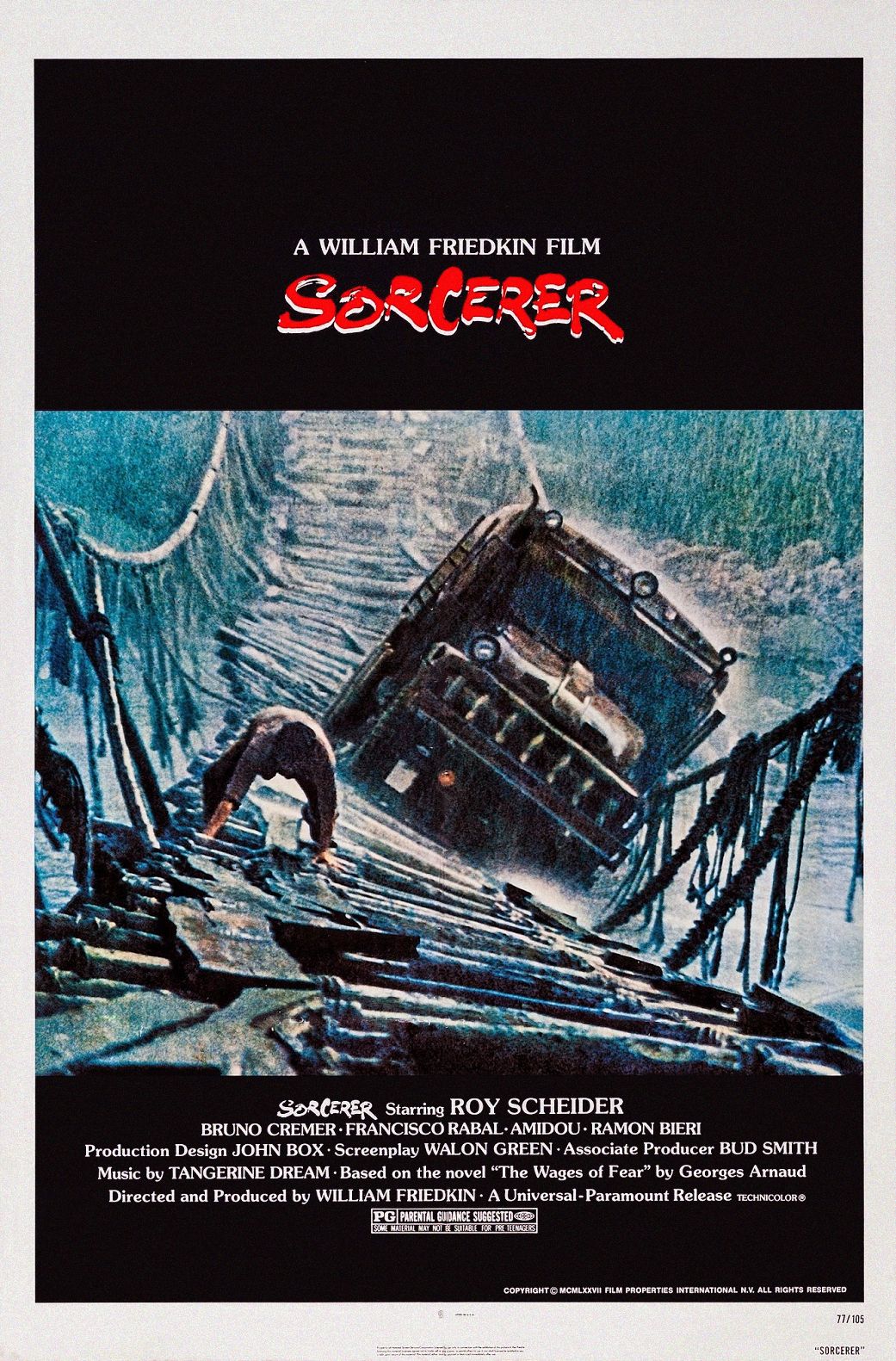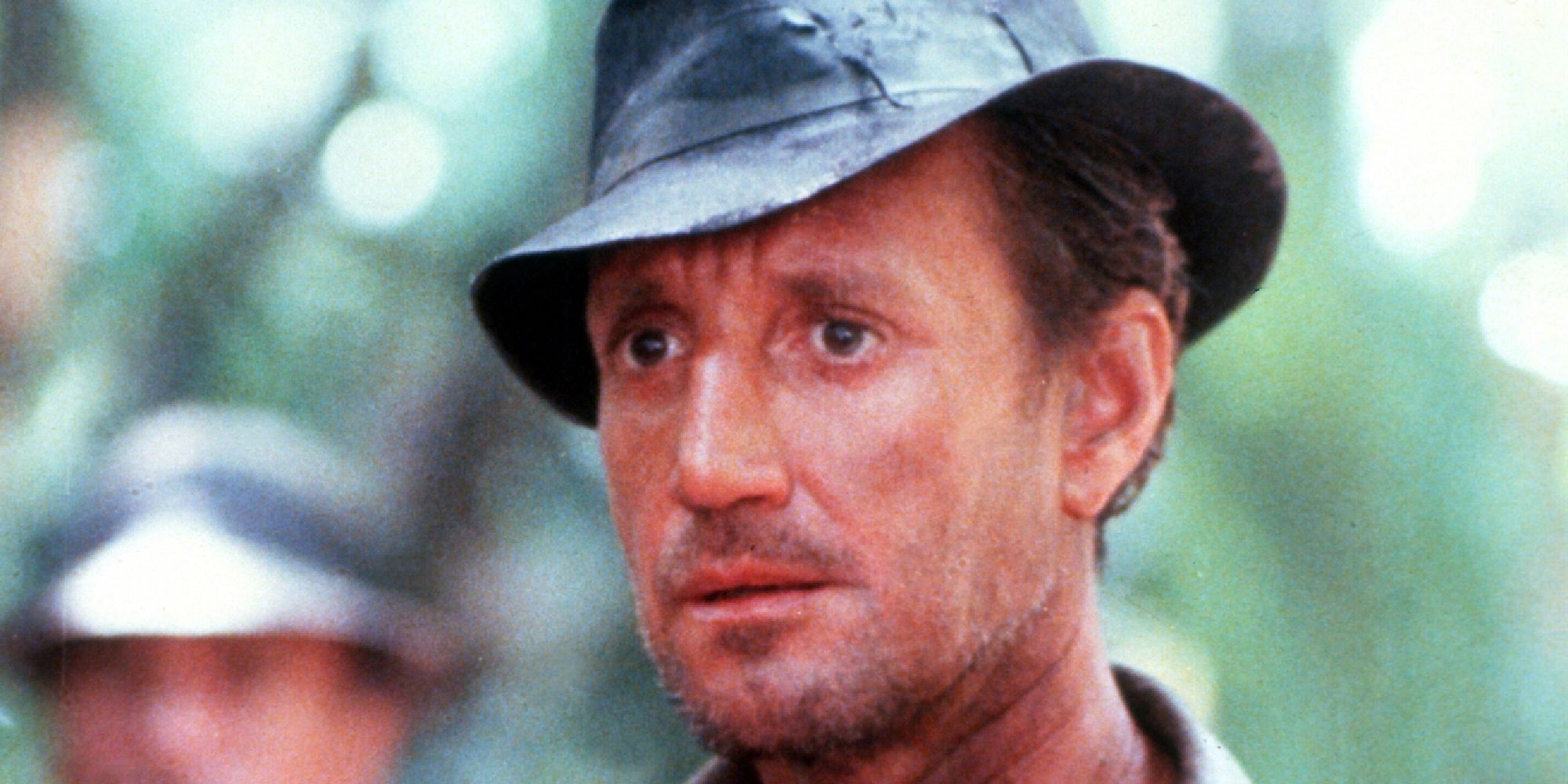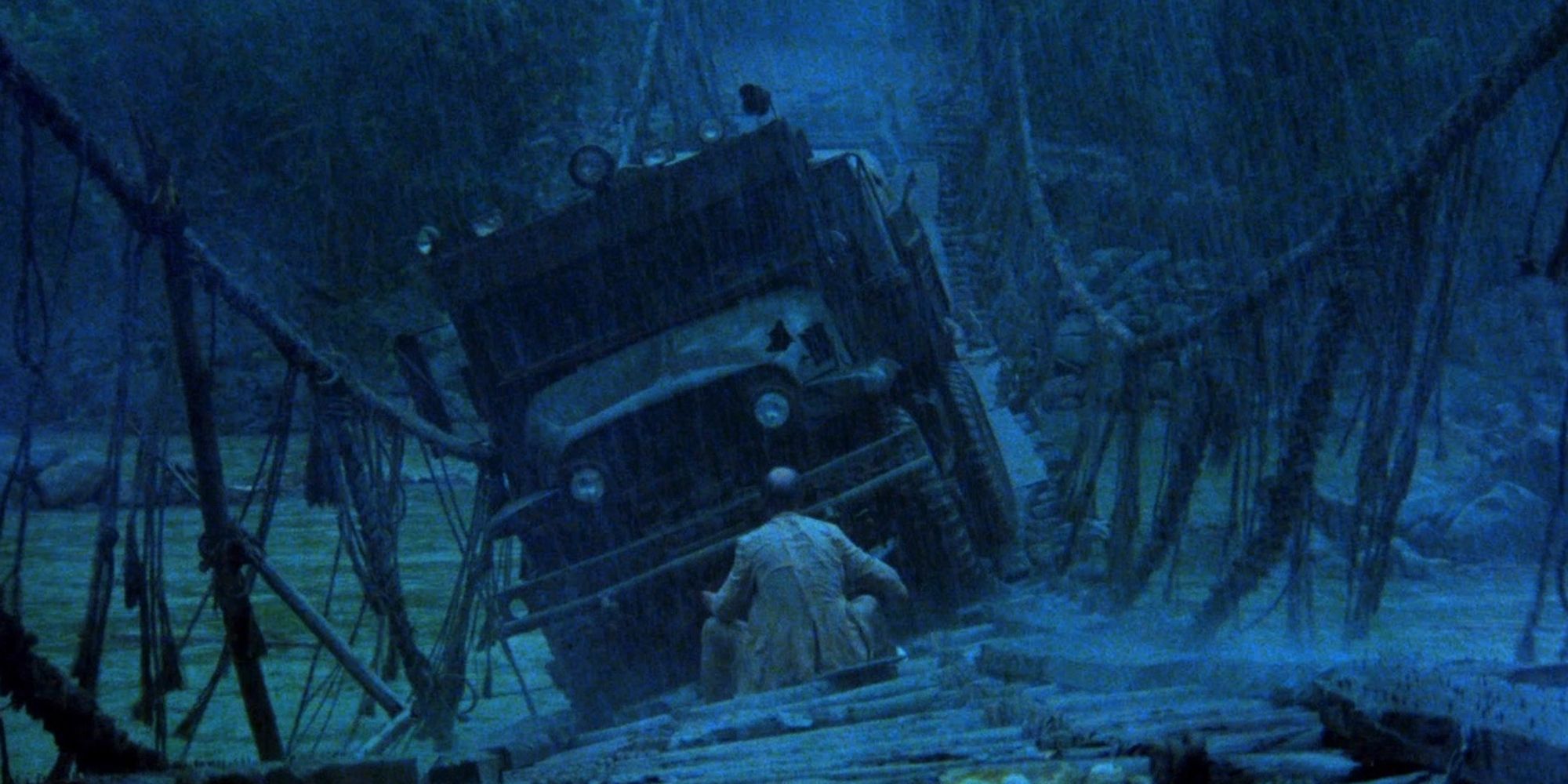The Big Picture
- Sorcerer reimagines The Wages of Fear with four men navigating psychological and physical turmoil in South America.
- Friedkin's immersive approach aligns action filmmaking with war-like experiences to create a visceral, evocative journey.
- Scheider's tormented protagonist symbolizes post-traumatic stress, reflecting the era's mental health crises and existential despair.
Released in the midst of the Star Wars boom in mid-1977, Sorcerer acted as William Friedkin’s gritty and loose reimagining of Henri-Georges Clouzot’s foundational action thriller The Wages of Fear. Following an unlikely team of four men attempting to transport a dangerous load of active nitroglycerin while living on the lam in South America, Sorcerer literalizes the collective and individual traumas of the Vietnam Era through the men’s brazen and often annihilative tendencies, exhibiting the layers of PTSD through a Hitchcockian thriller narrative. Although Apocalypse Now would transpose Heart of Darkness to Vietnam in an attempt to literalize the internal conflict of the era two years later, Sorcerer boldly retains its South American location to craft a more universal yet mysterious treatise on psychological deterioration, allowing space for elements of greed and self-sabotage to stand in for Watergate and other collective controversies from the decade. Even after decades of similar genre-centric takedowns of historical trauma, Sorcerer towers above its peers as both a cathartic sociocultural text from the late 1970s and an action thriller in opposition to the mainstream machismo of its contemporaries like Dirty Harry and the James Bond films.

Sorcerer
Four unfortunate men from different parts of the globe agree to risk their lives transporting gallons of nitroglycerin across dangerous Latin American jungle.
- Release Date
- June 24, 1977
- Director
- William Friedkin
- Cast
- Roy Scheider , Bruno Cremer , Francisco Rabal , Ramon Bieri , Amidou
- Runtime
- 121 minutes
Friedkin Gives 'Sorcerer' Stakes From the Beginning, Even Before the Perilous Journey
Rather than establishing the film’s protagonists as upright citizens and bearers of conventional moral standards, Friedkin introduces the four central figures as crooks and criminals through an inventive and efficient prologue, allowing the characters’ shady external actions to foreground the psychological fallout they will face throughout the rest of the film. From assassinations and acts of terrorism to familial abandonment and a catastrophic hit-and-run, each of the men chooses to escape their home countries and mundane existences to remain alive, which acts as an immediate repression of their personal guilt and trauma. By refusing to confront their mortality or face the consequences for their actions, the men can seem unsympathetic within the eyes of the audience; however, Friedkin’s clinical precision in delivering each traumatic story beat throughout the four opening sequences tethers the protagonists to the unavoidable dread that fate embodies. Although the men are guilty of various crimes and moral conundrums, Sorcerer never condescends towards the figures at the center of the film. Instead, Friedkin utilizes the structure of the action thriller and the tetralogy of vignettes to investigate how the audience would viscerally respond to similar fateful and fearful events.
While Sorcerer effortlessly imbues the suspenseful narrative with palpable stakes from its opening, the central sequences of the four men transporting nitroglycerin from the fictional port of Porvenir, Colombia across the Amazonian jungle prioritize the symbolic role that PTSD plays in the structure of the action thriller. Led by Roy Scheider’s brooding mob driver Jackie Scanlon, the protagonists accept a job to bring unstable dynamite to an exploding oil well in order to stop the flames from destroying the forest. Even as the initial plot seems precarious enough, the local oil magnates and occupational leaders force them to build their own truck from scraps, rendering the truck itself a symbol of the men’s psychological instability from the offset of the adventure. By building both the team and the truck from scraps, Friedkin highlights the emotional fragility and mortal vulnerability that hangs over the lives of the central characters, paralleling the collective fears and individual traumas surrounding the Vietnam War with the onscreen experiences of the protagonists.
In perhaps the most perilous moment on the journey to the flaming oil well, Friedkin and his actors collectively exercise their bravura cinematic talents to showcase a hyper-realistic sequence of the titular truck traversing a disintegrating rope bridge. Filming the sequence on-location and within the elemental mayhem of a torrential downpour, Friedkin amplifies the atmospheric suspense by maintaining steady coverage on the truck’s slow rumble across the collapsing bridge; however, by interrupting the wide shots of the truck being ushered along the dangling planks of wood with close-ups of Scheider’s stressed expressions as he drives the truck and Amidou’s furiously resilient Martinez guiding the truck to safety, Friedkin relocates the sequence within a headspace of mortal fear. Even as the sequence assiduously builds tension through an expert mix of fragmented yet methodical editing and blue-tinted cinematography, the scene’s conclusion amplifies the personal fallout of constant near-death experiences.
'Sorcerer' Shows a Grounded Approach to Action Filmmaking
As the bridge eventually collapses, the four men take on the job of pulling the truck onto solid ground without stirring the active explosives, affording all the actors the grueling act of crawling through the muck of the forest while forcibly spurring the truck onward. By leading the ensemble to literally perform the task at hand as they perform as their characters, Friedkin empowers his actors to imbue the sequence with corporeal stakes that are equally physically treacherous and psychologically evocative. Although the audience is afforded the satisfaction of seeing the truck pulled to safety within a few minutes, the narrative length and affective breadth of the sequence mobilize the actor’s literal and metaphorical blood, sweat, and tears to bring the physically and mentally brutal to fruition, playing off of the devastating semiotics of war-like imagery to serve as an entry-point into their traumatic experience.
Building off of the relentlessness of the men’s trek through the jungle, the ambiguous ending of Sorcerer sees Scheider’s protagonist as a shell of his former self, which serves as a reminder of the fragile humanity at the film's core. Rather than rendering Jackie Scanlon as an indestructible hero or an emotionless force of strength, Scheider affords the character ample onscreen space to sit in silent contemplation concerning the mounting pain he experienced before his time in South America and along his death-defying journey. Visualized in shadowy gray as he sits in a bar back in Porvenir, Scanlon embodies the post-traumatic stress of his expedition, echoing the prevalent conversations of post-Vietnam mental and physical health crises from the time within his mournful visage. As the film follows up the final shot of Scheider’s face with an establishing image of the bar and the sound of a gunshot, Friedkin both visually indicates and ideologically indicts the hopelessness of the postwar moment, leading the audience to ponder about methods of restoration and reform that could address the humanitarian crisis at multiple levels.
While Friedkin’s hyperrealistic approach to trauma and calculated experiment in action filmmaking possibly added to the film’s ostracization of audiences at the time, the brazen control of suspense building and thoughtful sociopolitical commentary have empowered Sorcerer to grow in critical estimation over time, setting it apart as an essential work of New Hollywood cinema.
Sorcerer is available to stream on The Criterion Channel in the U.S.


